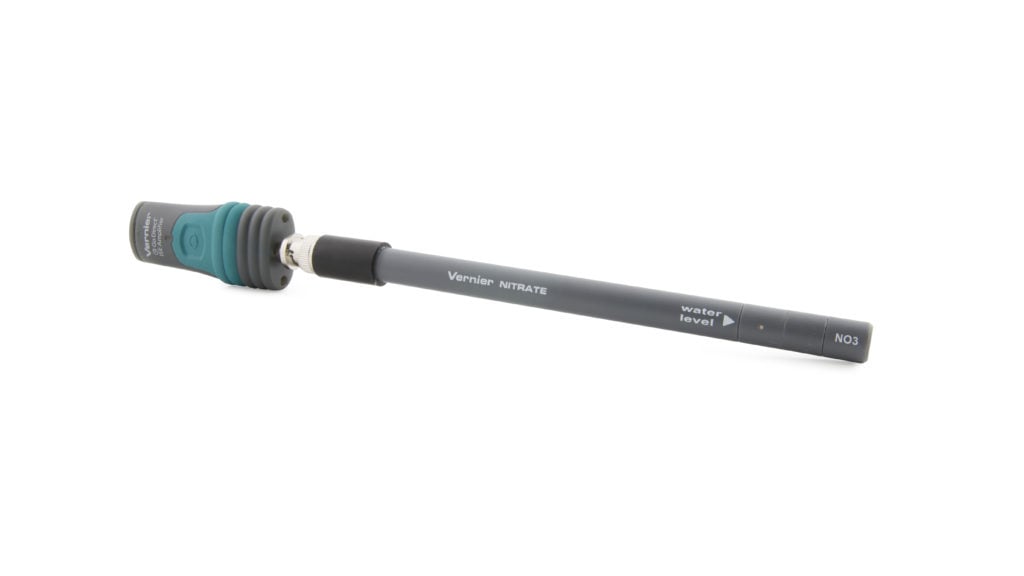
Use Vernier ion-selective electrodes (ISE) in an innovative way to facilitate student understanding of Nernstian behavior. While most ISEs on the market allow you to report measurements as potential (in mV), with our Go Direct® Ion-Selective Electrodes, you have the option to report readings in mg/L, mV, or both. Simultaneously displaying graphs of concentration and potential means students can visualize their data in new ways and develop a more complex understanding of Nerstian behavior.
ISEs give direct measurement of cations and anions. The electrode produces a difference in potential between itself and a reference electrode. This difference in potential is proportional to the concentration of the selected ion in solution and is described by the Nernst equation, making ISEs useful teaching tools. Go Direct ISEs from Vernier include the following species: NO3–, NH4+, Ca2+, Cl–, and K+.
- E = Eo – 2.3 (RT/nF) log (C + Co)
- E = measured potential (mV) between the ion-selective and the reference electrode
- Eo = measured potential (mV) at the lower concentration standard
- R = universal gas constant (R = 8.314 J mol–1 K–1)
- T = temperature in K (Kelvin), with T (K) = 273.15 + t °C where t is the temperature of the measured solution in °C
- F = Faraday constant (96485 C·mol–1)
- n = valence of the ion
- C = concentration of ion to be measured
- Co = detection limit
Since R and F are constant, they will not change. The charge of the ion (valence) to be measured is also known. Therefore, this equation can be simplified as
E = Eo – S * log (C + Co)
where S = –2.3 (RT/nF) is the ideal slope of the ISE. The term 2.3(RT/nF) is referred to as the Nernst slope. For an ideal electrode, the slope at 25°C is 59.16 mV per charge for an ion with a valence of 1. For an ion with a valence of 2, the slope would be 29.58 mV.
Assuming Co is near zero, the equation can be rewritten as
C = 10^ [(E – Eo ) / S]
This allows for the calculation of the ion concentration. Ion-selective electrodes have slopes that are typically lower than ideal. It is generally accepted that an ISE slope from 88–101% of ideal is allowable. The slope (S) is also an indicator of ISE performance. If the slope changes significantly over time, it may indicate that it is necessary to replace the ISE sensor tip.
The value of S is determined by measuring the potential of two standard solutions, and solving the equation
S = – [(Low Standard – High Standard) / # of decades*]
* A decade is defined as the factor of the difference between the two standard solutions. For example, the difference between a 1 mg/L standard and a 100 mg/L standard is 2 decades (a factor of 100).
For questions about the ion-selective electrodes, email chemistry@vernier.com
